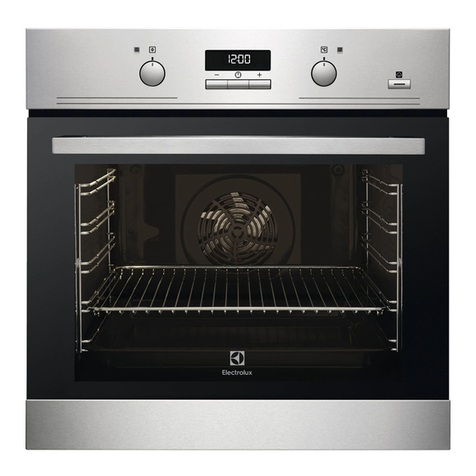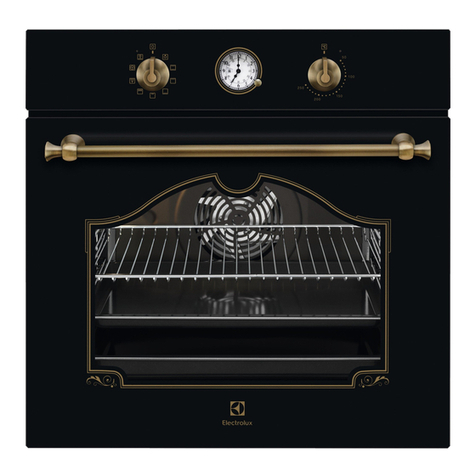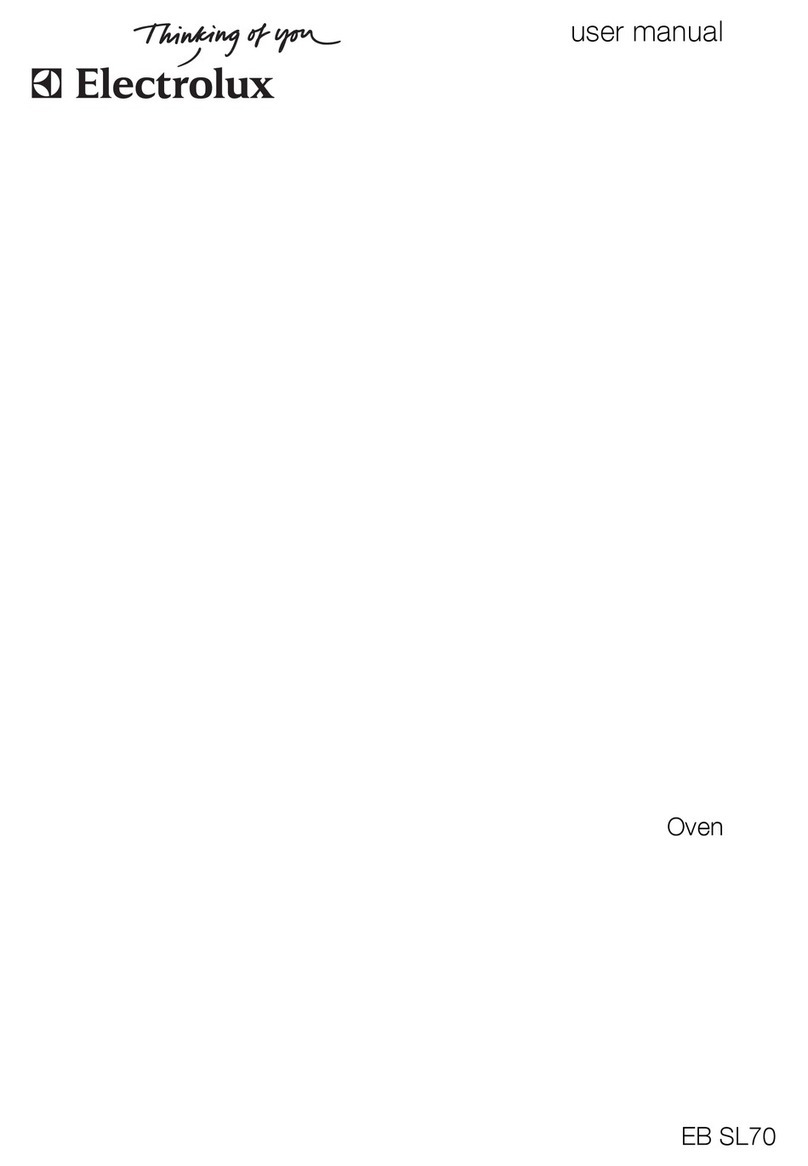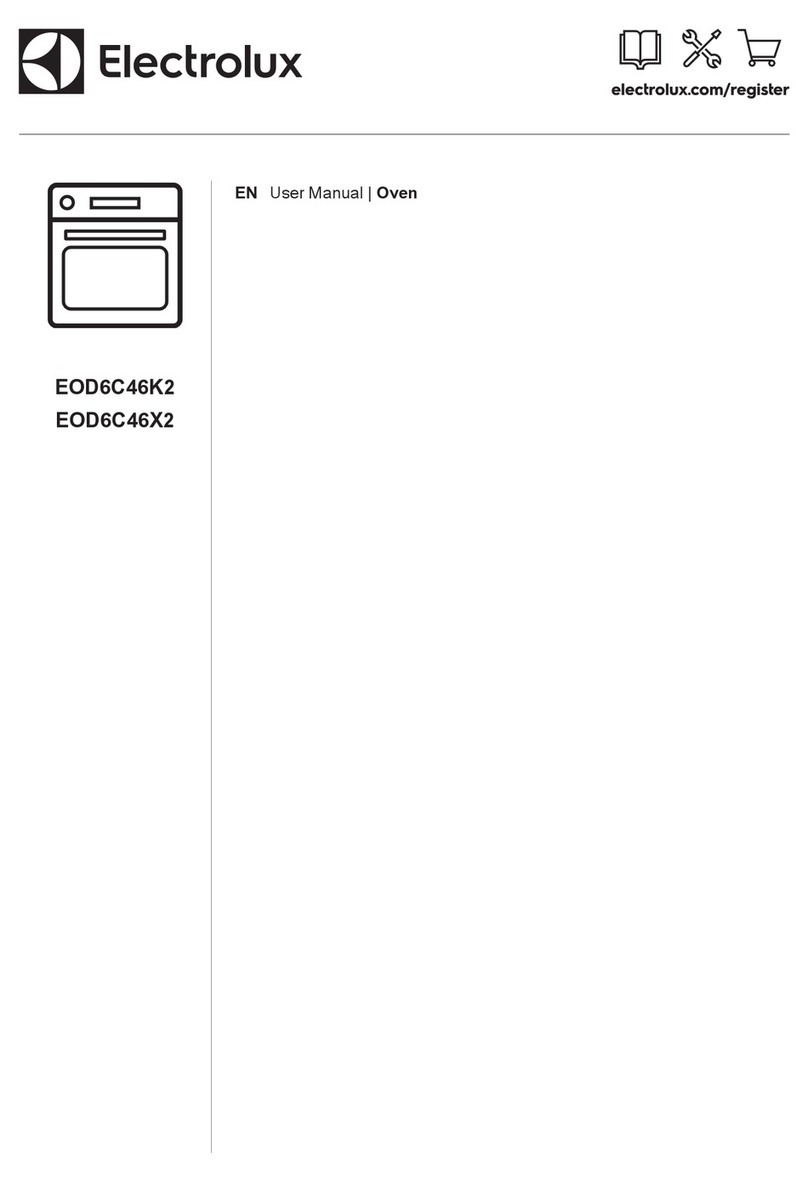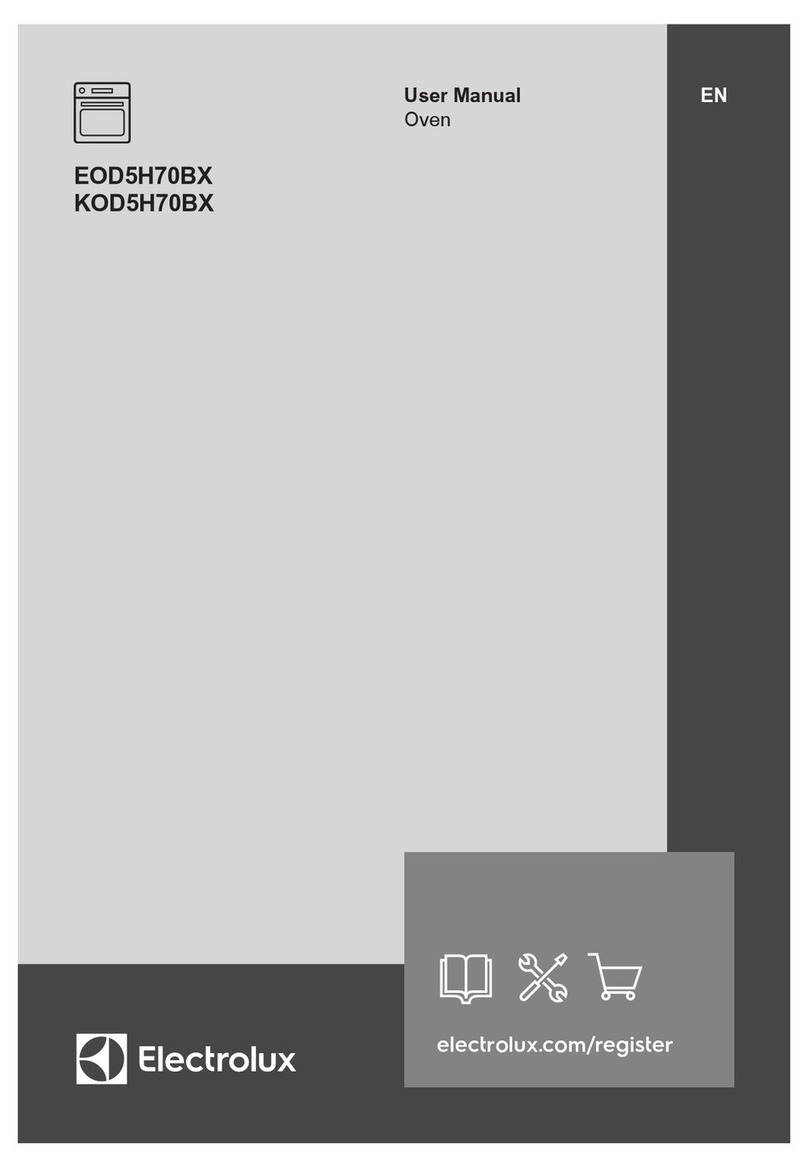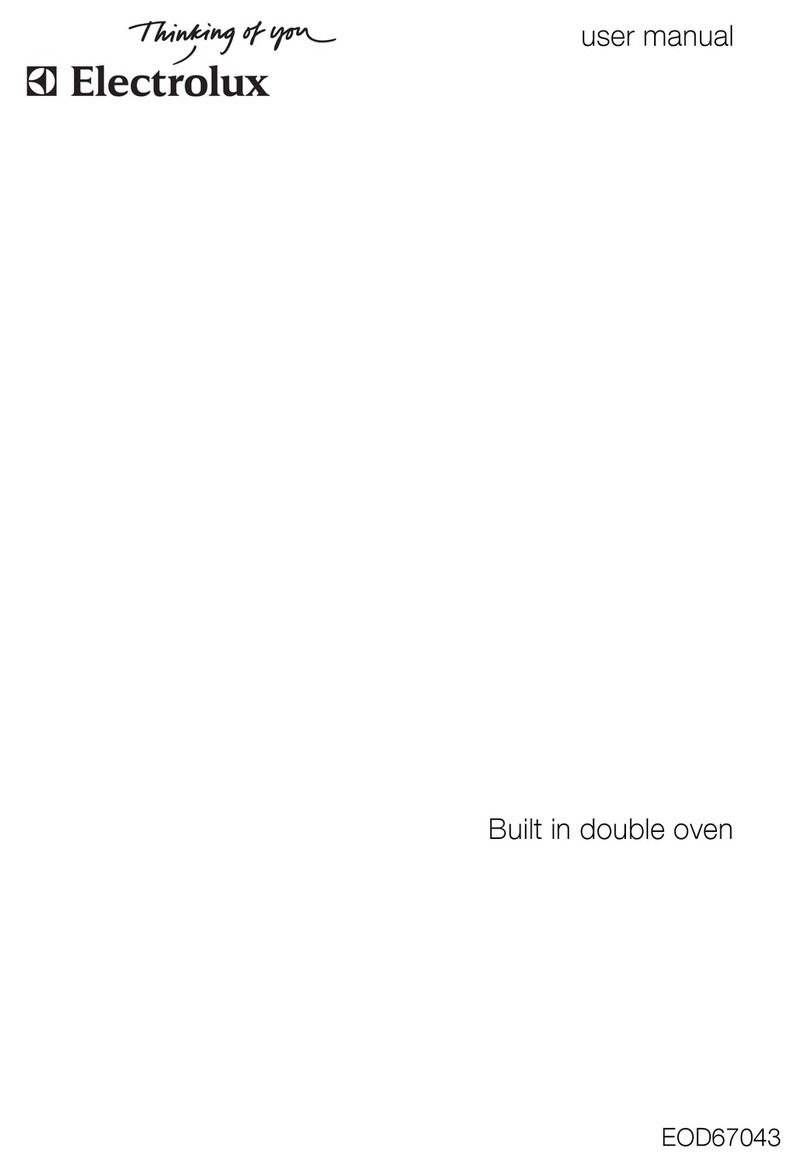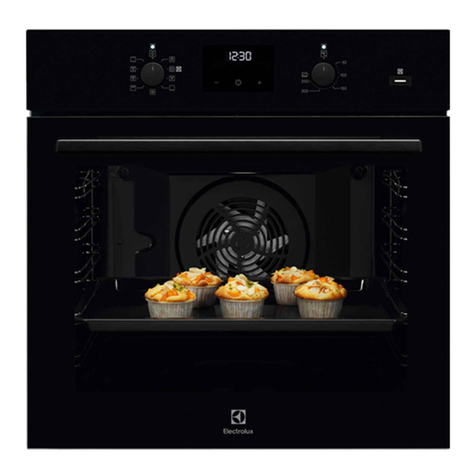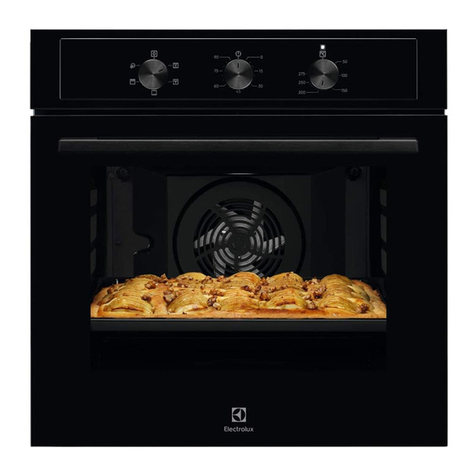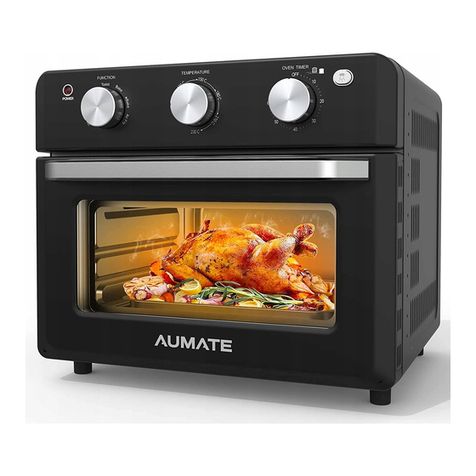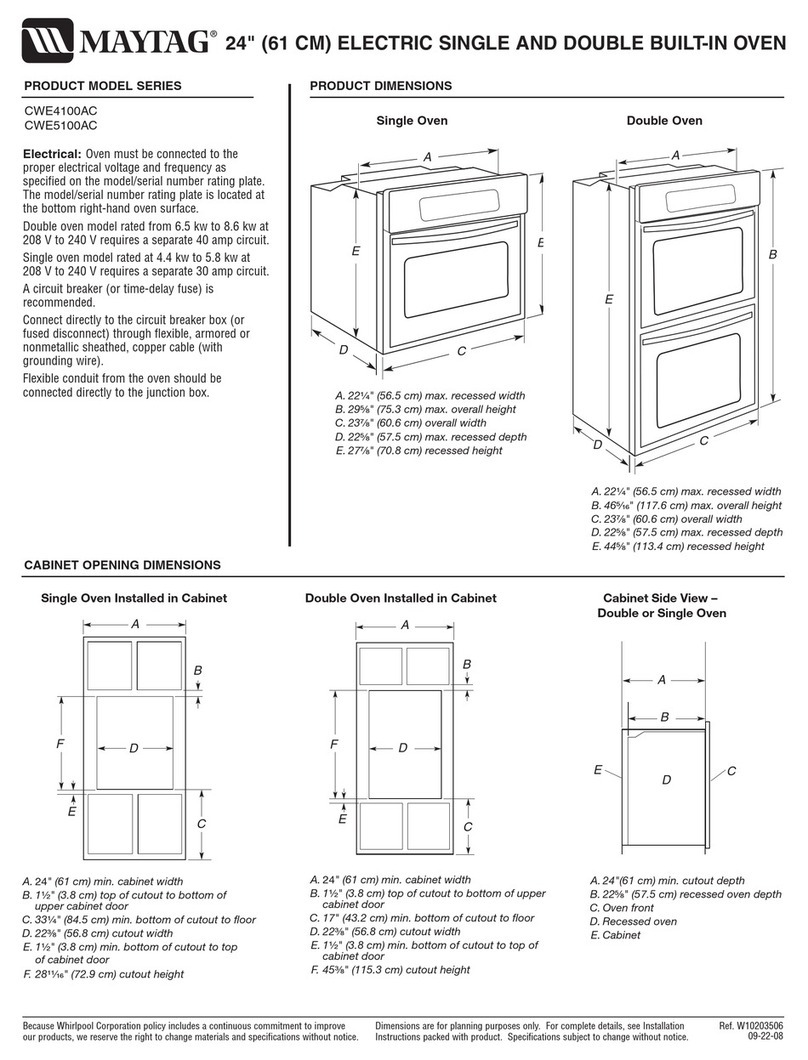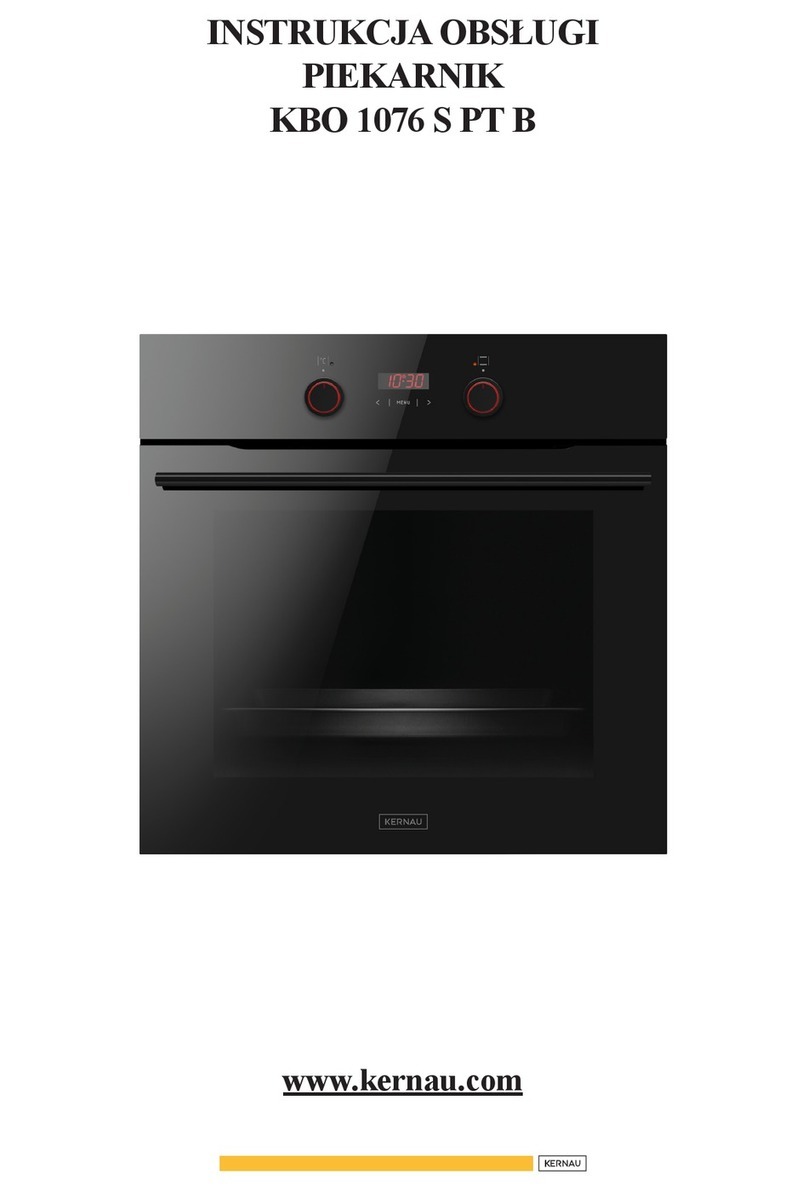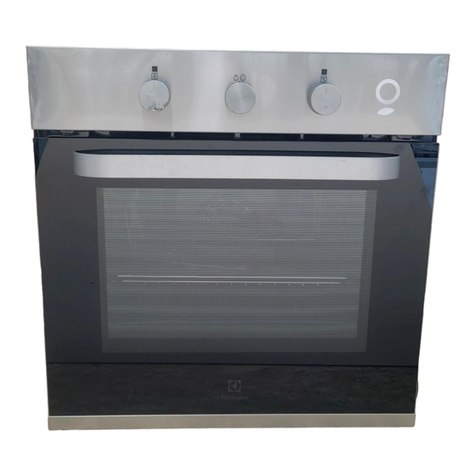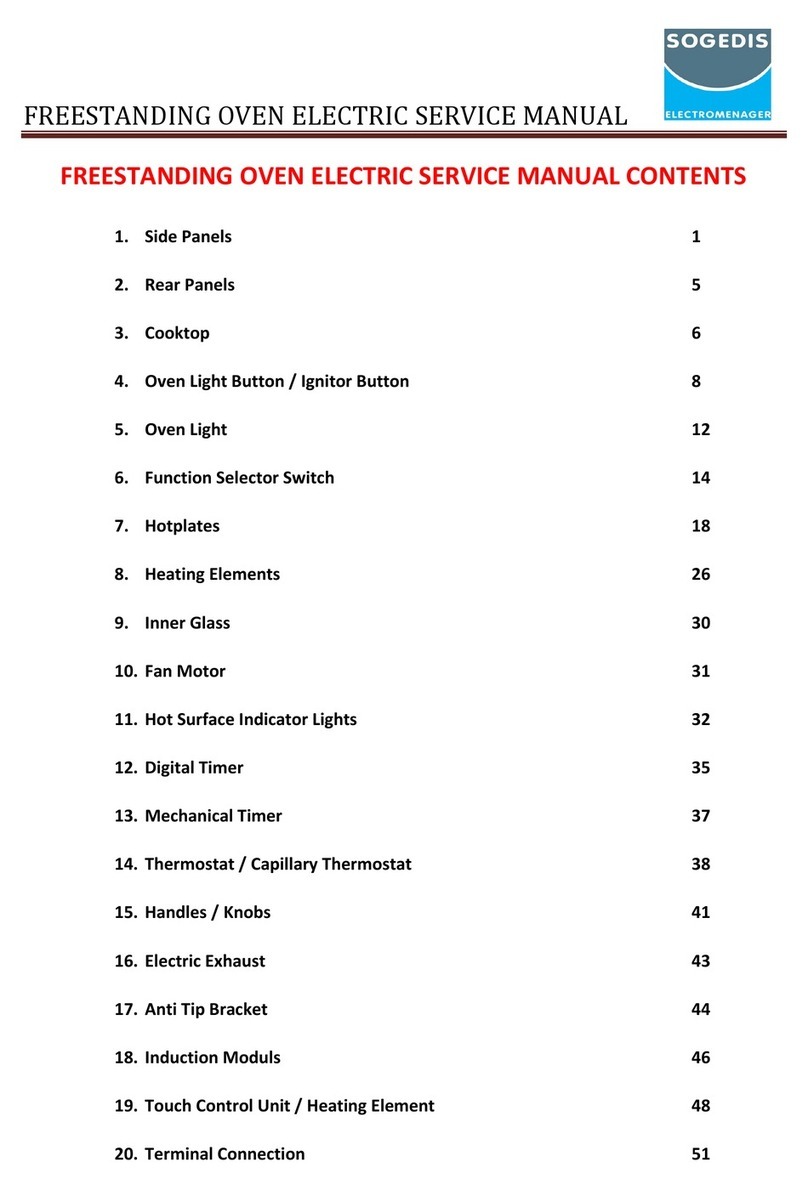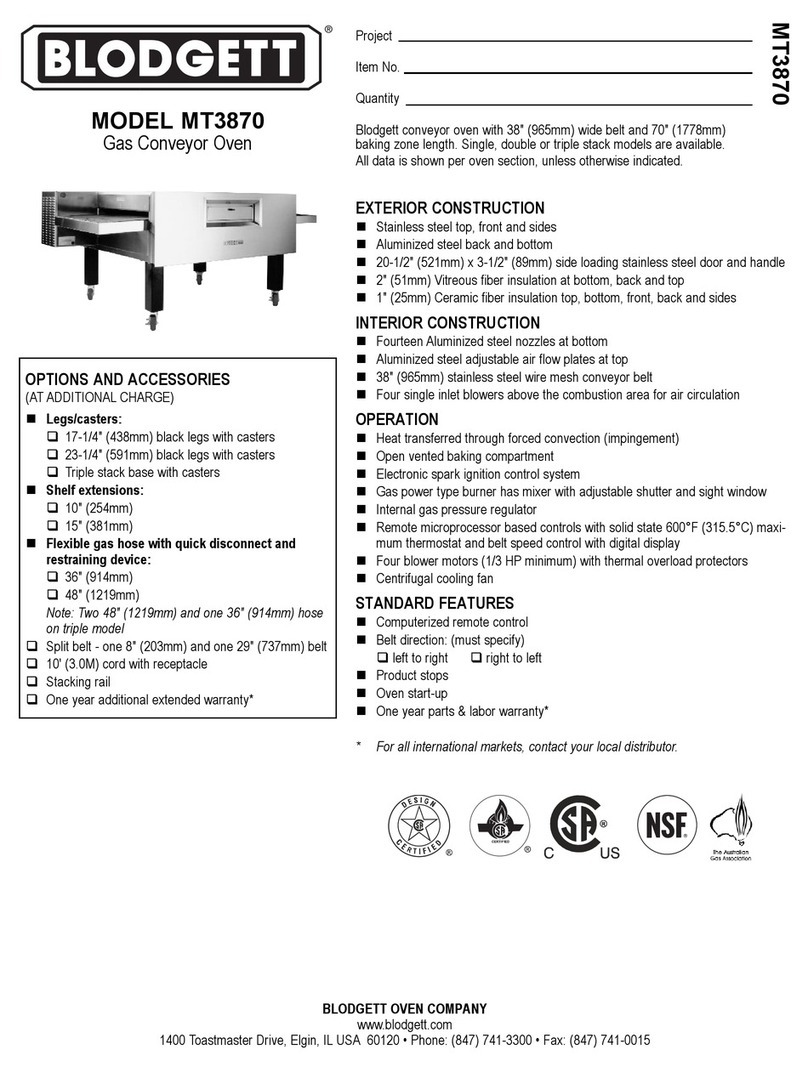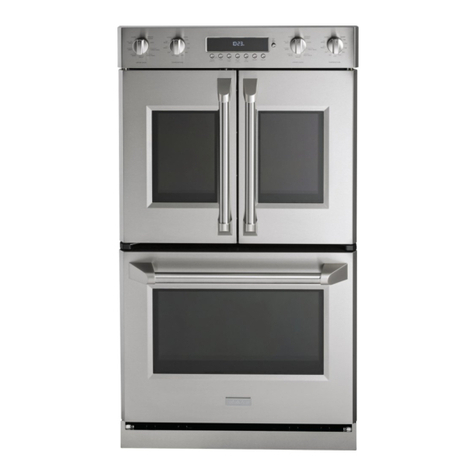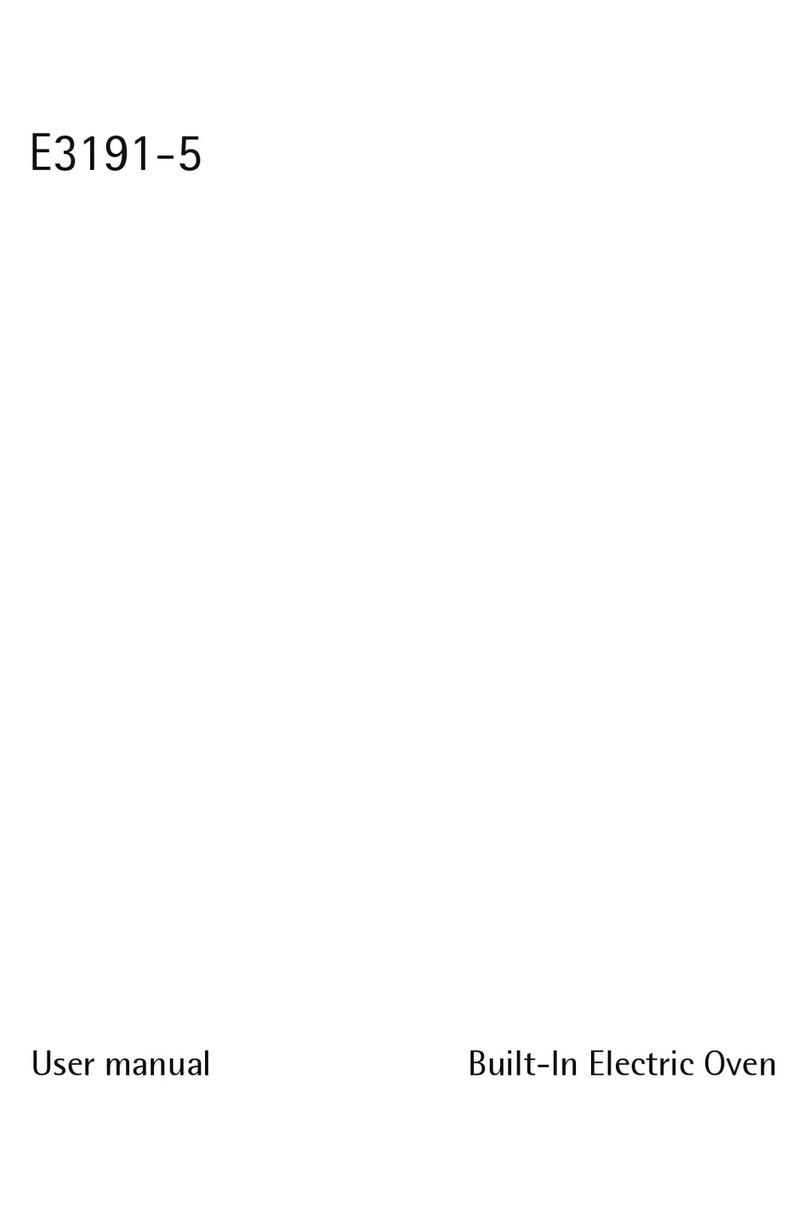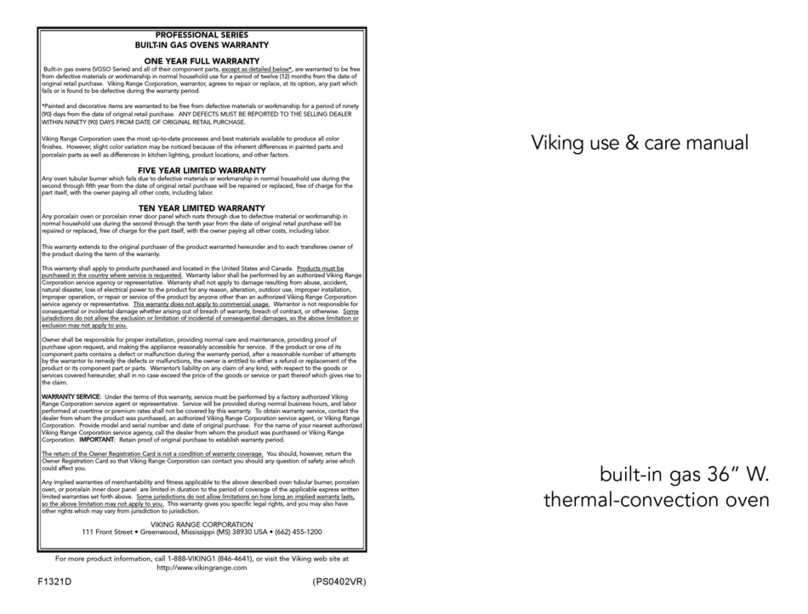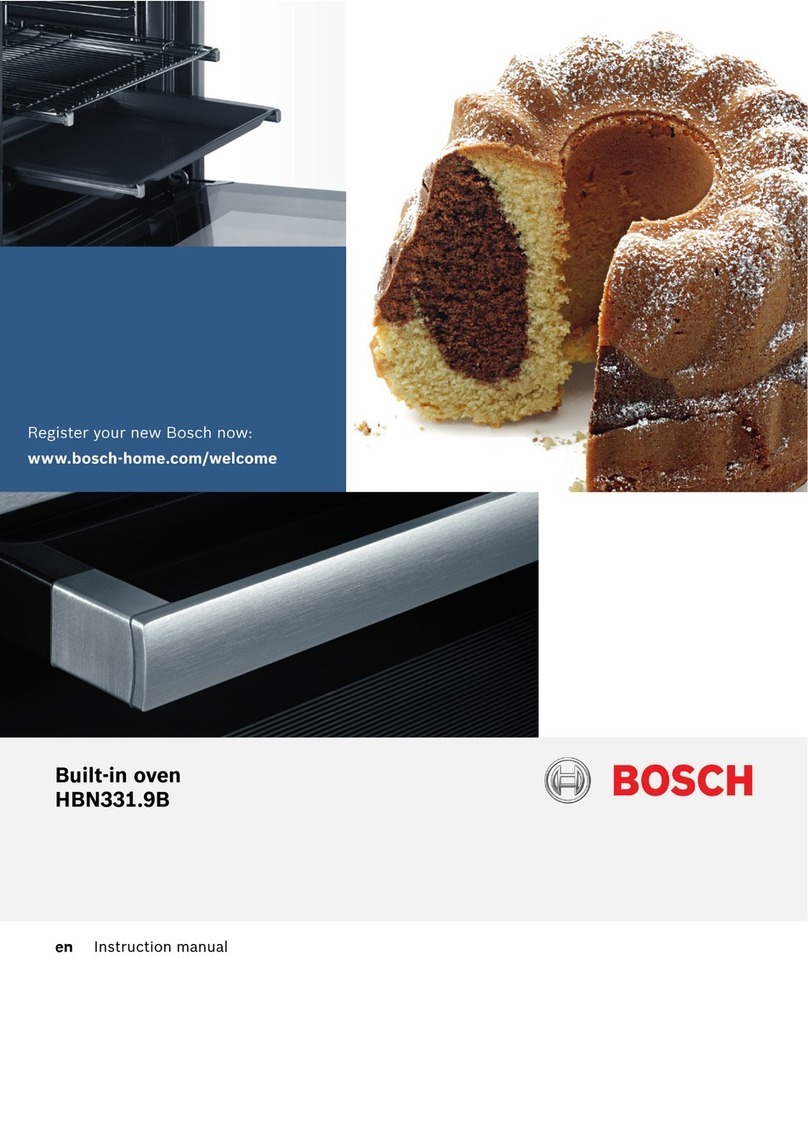2
Important Safety Information
Guide to Use the instructions
The following symbols will be found in the text to guide
you throughout the Instructions
Safety Instructions
Step by step instructions for an operation
Hints and Tips
Environmental information
F
It is most important that this instruction book should be retained with the appliance for future reference.
Should the appliance be sold or transferred, always ensure that the book is left with the appliance in order
that the new owner can get to know the functions of the appliance and the relevant warnings.
These warnings are provided in the interest of safety. You MUST read them carefully before installing or
using the appliance.
Installation
This oven is heavy and care must be taken when
moving it.
Ensure that all packaging, both inside and outside
the oven, has been removed before the oven is
used.
The oven must be installed according to the
instructions supplied. Any electrical work must be
undertaken by a qualified electrician.
It is dangerous to alter the specifications in any
way.
After installation, please dispose of the packaging
with due regard to safety and the environment.
Child Safety
This oven is designed to be operated by adults and
children under supervision. Young children must not
be allowed to tamper with the controls or play near
or with the oven.
Ovens become very hot, and retain their heat for a
long period of time after use. Children should be
kept well away from the oven until it has cooled.
AUTION - accessible parts, especially around the
grill area, may become hot when the oven is in use.
Children should be kept away until it has cooled.
During Operation
Do not use this oven if it is in contact with water
and never operate it with wet hands.
Ensure that the oven shelves are installed in the
correct way.
Take great care when heating fats and oils as they
will ignite if they become too hot.
This oven has been designed for cooking edible
foodstuffs only and must not be used any other
purposes.
Never place plastic or any other material which may
melt in or on the oven.
Only clean this oven in accordance with the
instructions.
Take care to follow the recommendations given for
tending the food when grilling. Use the handles
provided in the recommended way.
Always grill with the oven door closed.
Always use oven gloves to remove and replace food
in the oven.
Ensure that you support the grill pan when removing
it from the oven.
Never line any part of the oven with aluminium foil.
Do not allow heatproof cooking material, e.g.
roasting bags, to come into contact with oven
elements.
Always stand back from the oven when opening
the oven door, to allow any build-up of steam or
heat to release.
Stand clear when opening the drop down oven door.
Do not allow it to fall open - support it using the
door handle, until it is fully open.
Do not place sealed cans or aerosols inside the
oven. They may explode if they are heated.
Do not hang towels or clothes from the oven or its
handle. They are a safety hazard.
After Use
Ensure that all control knobs are in the OFF position
when not in use.
For hygiene and safety reasons, this oven should
be kept clean at all times. A build-up of fats or other
foodstuffs could result in a fire, especially in the grill
pan.
Only clean this oven in accordance with the
instructions.
Always allow the oven to cool down before switching
off at the wall prior to carrying out any cleaning or
maintenance work.
Do not leave utensils containing foodstuffs, e.g. fat
or oil in or on the oven in case it is inadvertently
switched ON.
Under no circumstances should you attempt to
repair the appliance yourself. Repairs carried out
by inexperienced persons may cause injury or
serious malfunctioning. Refer to your local Service
Centre. Always insist on genuine spare parts.
Environmental Information
After installation, please dispose of the packaging
with due regard to safety and the environment.
When disposing of an old appliance, make it
unusable, by cutting off the cable. Remove any
door catches, to prevent small children being
trapped inside.

